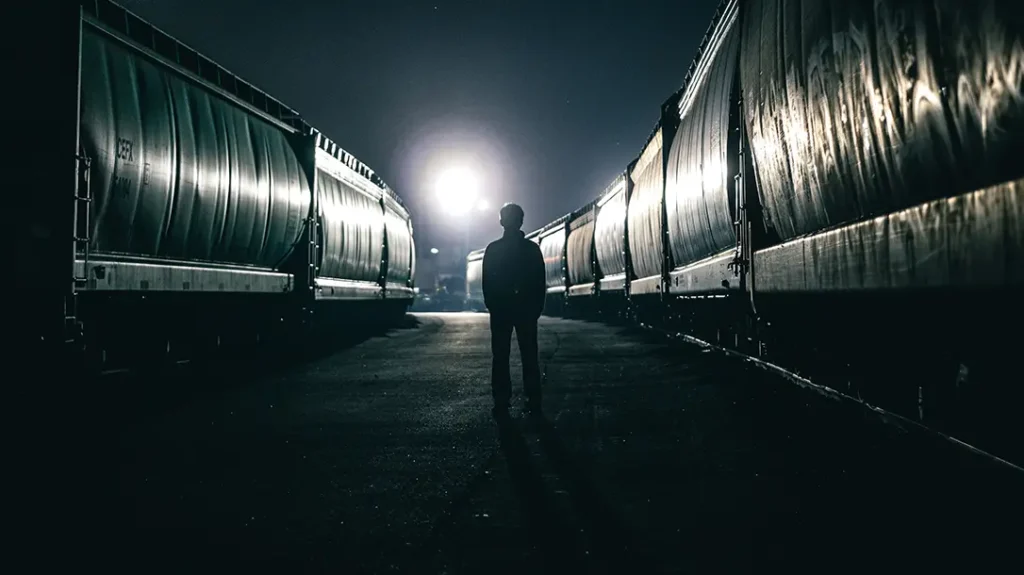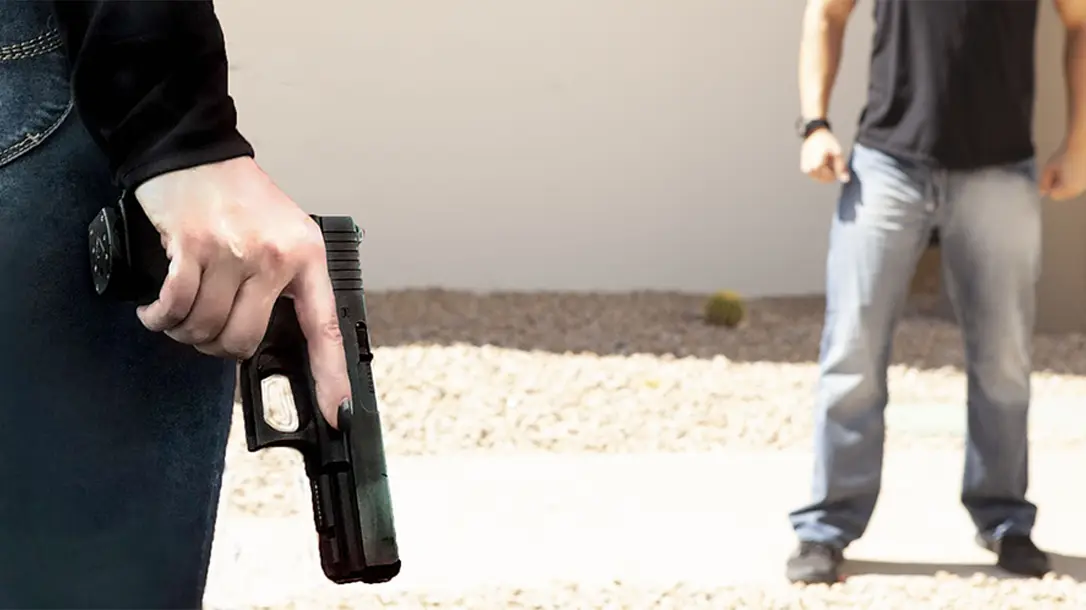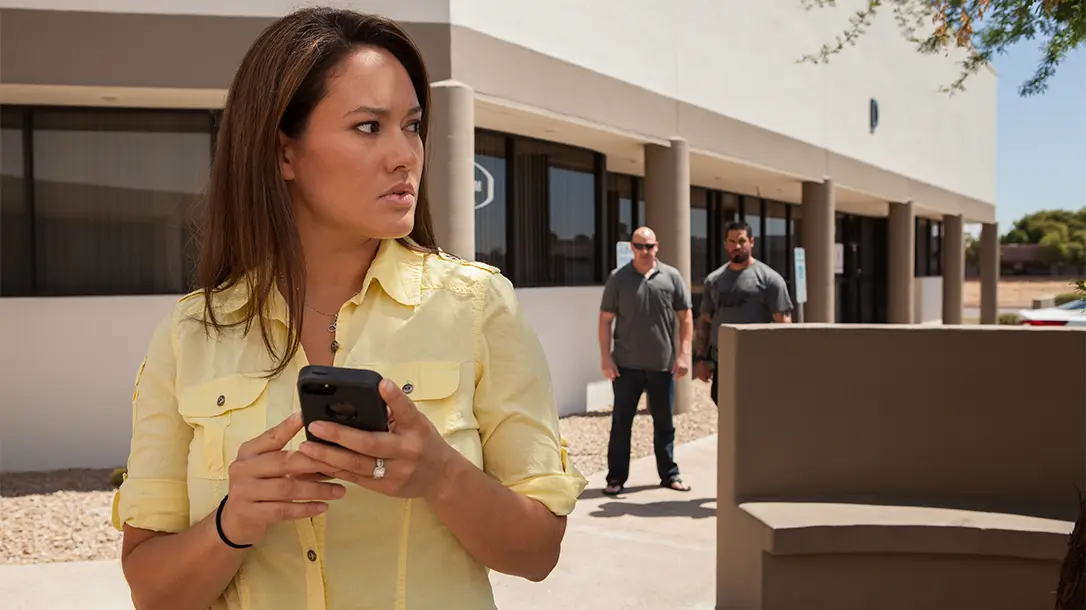On December 7, 1941, Pearl Harbor was a citadel, the home base of a powerful U.S. naval force. But on that terrible morning, people on the ground were unprepared to respond to an attack and someone ignored a blip on a radar screen. The Japanese warplanes that swept in had a terrible advantage, and in minutes the mighty U.S. Pacific Fleet lay devastated, with thousands of Americans dead. That horrible moment typifies an eternal lesson: Be vigilant and be prepared to respond appropriately to the “blip on the radar screen.” This is where employing situational awareness tactics comes into play.
Proactive Self-Defense Through Situational Awareness Tactics
You can have a more powerful gun than RoboCop, be faster on the draw than Bob Munden, have a quicker shot than Bob Vogel, and be more accurate than Gunny Zins. Likewise, you could even have just won the Mixed Martial Arts Championship of the Galaxy. But all this won’t save you if your head is in the sand when you are attacked.
A basic rule of the self-defense world is that action beats reaction. The bad guy gets to be the actor, and you are stuck being the reactor. The only antidote for that poison is something professionals call the reactionary gap.
Advertisement — Continue Reading Below
You have to live your life in a way that enables you to see coming danger in time to react. Let’s look at a few vulnerable scenarios in daily life. As well as how you can better prepare yourself to anticipate them through various situational awareness tactics. So, you can spot threats and defend yourself and those who count on you.
Awareness at The Rest Stop
Some hideous things have happened to people at highway rest stops. Most often in the depth of night, but sometimes in broad daylight, too. It has become such a concern that some jurisdictions are stationing police at rest stops.
In Florida, you’ll generally find a highway patrol officer on-site at every rest stop, at least during high-crime hours. When a place is so dangerous that a state is assigning armed troopers there, that’s telling you something.
Advertisement — Continue Reading Below
Never forget that there is a reason they call it a rest stop. It’s a place where you go when you need to rest. Often, your mind is more focused on your distended bladder than the dangers nearby. Stay alert. Remain alert going in, coming out, and in between always practicing situational awareness and other survival tactics.
Consider Example One.
One of my female friends, a cop who was on vacation, became exhausted on the superhighway. She realized she wasn’t at the optimum safety potential to be driving a mobile bludgeon at 70 miles per hour. So, she pulled into a rest stop to, well, rest.
Advertisement — Continue Reading Below
She left her windows down just a bit for air, locked the doors, reclined the driver’s seat back and caught some shut-eye. Late that night, some bad guys cruising for innocent victims saw a pretty girl asleep in the car. They came up and tried to rip the door open to get at her.
She came up with the Glock she carried off-duty. The men ran like the animals they were and were gone by the time the local police she summoned arrived. But she was glad she had something to protect herself with—I’m glad too.
She had put enough barriers between her and them to buy her time to reach for her force multiplier.
Advertisement — Continue Reading Below
Communications
One good thing about living today is that we have more instantly available communication devices now than ever. But they’re imperfect. I’ve been in places, including rest stops, where there were no bars on my cellphone.
You know what, though? If you try to call 9-1-1 and the bad guys force you to hurt them, even a cellphone outside of cell tower range will record the very hour, minute, and second you attempted to make that call and do the right thing.

Advertisement — Continue Reading Below
Suppose the rapist you left paralyzed on the ground after he attacked you, claims, “Naw, Judge, I was just walkin’ by her car, and this crazy (expletive) shot me for nuthin’!” The cell phone record of your 9-1-1 call attempt will tell a different, more truthful tale.
Occasionally, rest stops will have an emergency system in place where you can summon the police. As any cop can tell you, there can still be trouble with that. As much as our police try to be proactive, they are, in fact, a reactive entity.
There are over 300 million citizens to protect and less than 1 million police officers to protect them. The reality is, law enforcement must know you’re in danger before they can get there to help you. And the attendant reality is that you have to survive the attack long enough to call 9-1-1.
Advertisement — Continue Reading Below
Modern Conveniences Provide Additional Tactics for Situational Awareness
So, carry a cell phone all the time. Think of your cell phone as your analog to a police officer’s portable radio: a piece of emergency communications equipment. Personally, I carry two of them, each on a different system.
It’s amazing how often one will have zero bars and be effectively dead. Yet the other will have full bars or close to it and give me communication. Another advantage of carrying two cells is that you can give one to a friend, partner, or family member who doesn’t have one. Then, you’ll effectively have walkie-talkie capability.
As countless YouTube videos prove, today’s smartphones allow people to record scenes of violence. I like the idea of holding my gun in my dominant hand, having my flip-phone dialed to 9-1-1 dispatch.
Advertisement — Continue Reading Below
Simultaneously, someone else on my side of the matter can hold my smartphone and record the escalating incident. This may later be disputed by some attacker in a court of law, where the judge and jury start off with no knowledge of who the good guys and bad guys are.
When I was younger, there were pay phones everywhere. Those things are almost extinct now. Have you noticed that, when you see one, someone with you always seems to say, “Look, an old pay phone!” That’s some handwriting on the wall, right there. It is best to have your own communications with you at all times.
Public Restrooms
Public bathroom. In our culture, that’s an oxymoron, a contradiction in terms. A private place that’s public? The bad guys have picked up on this. In those rest stops we talked about, a high number of assaults, especially on women, occur in or near toilet areas.
Advertisement — Continue Reading Below
Many years ago, police survival authority Rich Wemmer of the LAPD told me why smart male cops go to the stalls instead of using the urinals in public restrooms.
In Example Two, a famous Hollywood star was once attacked at a urinal. The psycho who had been stalking him came up behind the man and buried a knife in his lower back. The star lost a kidney but was lucky enough to survive.
A mugger’s routine in the men’s room is simple. He’ll wait until there’s no one in there but you and him. As you are facing the wall at the urinal, he’ll come up behind you, grab you by the back of the head, smash your face into the wall, and put the edge of his drawn knife against the private part you’re holding. He has, you might say, achieved “negotiating posture.” Criminals have tactics, too and it important to use situational awareness to prevent them from succeeding.
The Open Carry Solution?
Someone might say, “I’ll just carry my gun openly, and they’ll be too afraid to do that!” Not hardly. Not too long ago, in Example Three, in the south, a guy came up behind a uniformed police officer who was doing his thing at the urinal. He tried to snatch the cop’s Glock 22 out of his holster from behind.
The officer, fortunately, reacted quickly. With his dominant hand, he clamped the offender’s hand down on the gun, keeping it in his security holster. And with his free hand he drew a folding knife and opened up the would-be cop-killer like a zipper bag. That ended the assault. And the perpetrator emerged from the hospital to stand trial for his savage attack upon an on-duty police officer.
I’ll go with Rich Wemmer’s rule, thanks. Even if it’s a matter I can take care of standing up, I’ll go into a stall instead. I’ll wait if I have to. Yes, that thin metal door is weak, and so is its lock. But it still affords a better buffer zone against an attack from behind. The time a bad guy spends trying to get through that door is time for you to turn things around. Then you can play your game instead of his.
In the event you must sit on the commode to accomplish your task, the dynamics change. Most public restrooms in America are open under the stall doors. This allows assailants of any persuasion to dive prone, grab your ankles, and pull you forward.
This can slam the coccyx painfully against the porcelain seat and the base of the skull against the back of the toilet. Once your butt hits the floor, the knife comes against you, and the demands begin. This particular assault pattern seems to have begun on the East Coast.

Awareness is Key in the Ladies’ Room, Too
It happens in ladies’ rooms as well. The bad guys aren’t the only problem—there are bad girls, too, and they often prey on their fellow females. A man hanging out by a ladies’ room would quickly draw attention, and someone would call security or the police. However, a woman in or near the ladies’ room? No one looks twice.
When the bad girl catches you in there, seated and performing those necessary tasks, sit slightly forward with your heels behind your knees. That way, if anyone reaches under to grab your ankles, you can rock your weight forward and become almost immovable. Your opponent is now face down, with their arms extended and their hands occupied. A good time for you to reach down and steal their “negotiating posture.”
Loading the Car
For rapists and muggers alike, a favorite quarry is a person loading something into their vehicle in a parking lot. People performing this task are focused on it. Psychologically, their head is in the task; physically, their head is in the vehicle.
That means they don’t have much danger scan, perhaps none at all. Such a posture attracts criminals the way a predator call draws in coyotes. The difference is, when you’re calling in the coyotes, you’ve got a gun in the other hand.
Consider Example Four.
One of my petite female graduates in Idaho was putting groceries in her truck when the would-be rapist jumped her from behind. He grabbed her by the hair and smashed her face into the side of the vehicle, breaking her nose. Then he tried to choke her out.
Remembering what she had learned in class, she broke his hold and bent two of his fingers back to his wrist, breaking them. He screamed like a little girl and ran. He was gone before she could get her Colt .380 out of the glove box.
A Hard Lesson Results in Increased Firepower
She soon learned that her attacker fit the profile of a man who had recently raped another woman. He beat that victim so savagely that she was found wandering the streets, brain-damaged, after the assault.
Fearing he would return for a second round, my graduate upgraded from a .380 to a 9mm. She carried it on her person constantly, as she admitted she should have been doing the first time. He never came back for her. Apparently, he realized that he was in more danger from her than she was from him. But he remained at large, and there are stark lessons here.

Obviously, you’re not going to toss the baby in the car because you’re busy looking over your shoulder for muggers. But it pays to “have your head on a swivel.”
There’s no reason not to constantly scan around you as you place even the most precious cargo in your vehicle. Try to stand sideways at least a little, so your visual field isn’t buried inside the car.
Likewise, don’t be wearing hoodie-type garments pulled up over the side of your face, no matter what the weather. They’ll block your danger scan like blinders. Tactics like these are simple changes to your typical habits to maintain situational awareness wherever you are.
Gas Pumps
Predators have learned that people at gas stations are like gazelles at waterholes. They aren’t watching their surroundings while they’re “filling up” at either place. Most folks will face their car and watch the gas tank area so they don’t spill gasoline on themselves. And most of the rest will stare at the pump in horror, watching the price ratchet up on the gauge.
Don’t fall for that. If the nozzle is all the way into the gas tank, it isn’t going to spill over. And watching the pump isn’t going to make the price tally any cheaper. There’s a video out there, taken by a convenience-station security camera, of Example Five.
A mugger attacks a victim at the gas pump. He pounds the good guy back into his car. Thankfully, the intended victim is able to reach into his front-seat console, retrieve a Glock, and turn the tables. The final score was Good Guy 1, Bad Guy 0, but it was close.
I suspect that if you asked that motorist today what the takeaway lessons were from this incident, they would be (a) keep your head up and on a swivel when you’re gassing up your vehicle and (b) have your gun legally on your person and not somewhere inside the car when the attack starts outside the vehicle.
There’s no reason you can’t insert the nozzle, start the gasoline flow, and then turn your back to the vehicle. This simultaneously covers your back and leaves you facing the potential danger zone. As a result, you have much more opportunity to see an approaching attack.
If your gun is in a belt or shoulder holster, leave your gun-hand free and work the pump with your other hand if you can’t set the pump on automatic. If your gun is in your pocket, let the hand on your gun side stray casually into your pocket (when you’re looking like that gazelle at the waterhole) and pump the gas with your other hand.
Maintain Situational Awareness Anywhere You Are
It’s useful to think through any potential self-defense scenarios. Having something on file in that computer between your ears will speed your response when the stimulus comes. That said, none of us knows beforehand when we’ll need to defend ourselves.
I’ve had to bring out a gun unexpectedly during a walk through a parking lot, a stroll down a city street, and while asleep in a hotel room. It happens at a moment’s notice, but there’s no reason not to be watching for danger. Allow yourself more than a moment’s notice.
The constant alertness that Colonel Jeff Cooper defined as Condition Yellow isn’t paranoia—far from it. It simply makes you a people-watcher, the benign, good person who enjoys observing the passing parade of life. You’ll see far more good things, which you may have missed before, than bad.
But if you do see bad things, you’ll see them in time to do something about it. Learn from Pearl Harbor: It’s imperative to employ situational awareness tactics and keep an eye on the radar screen. But you also have to be committed to reacting when you see the dangerous blip on that screen.
Good luck. Enjoy all the good things you’ll see on that radar screen, and stay safe.
























